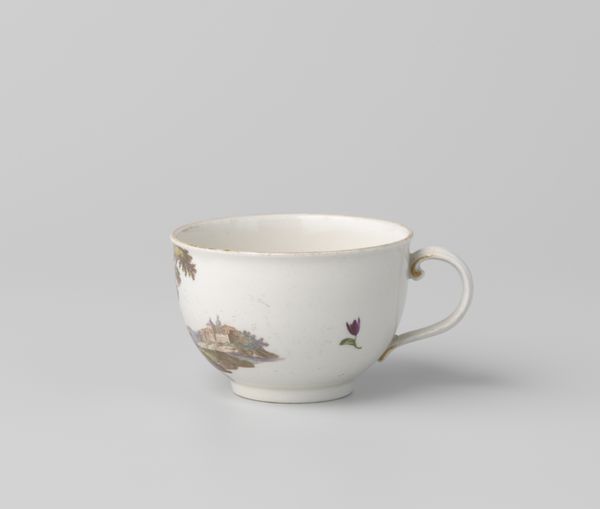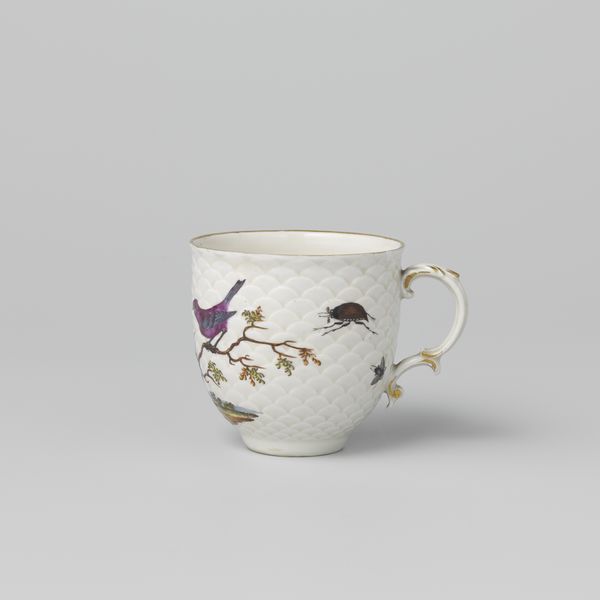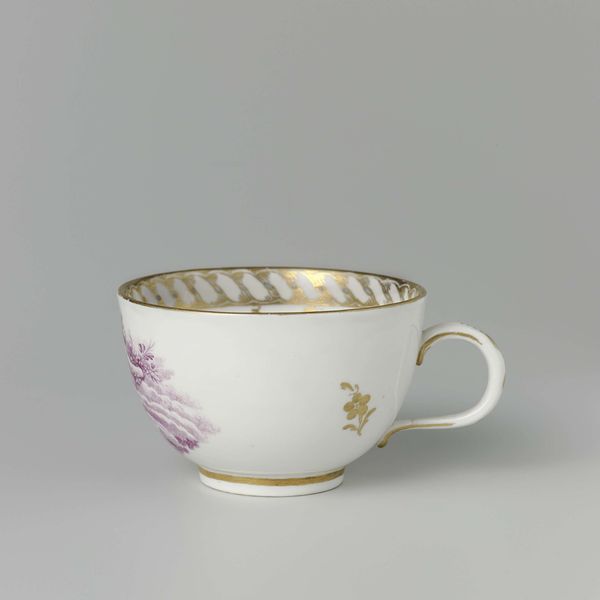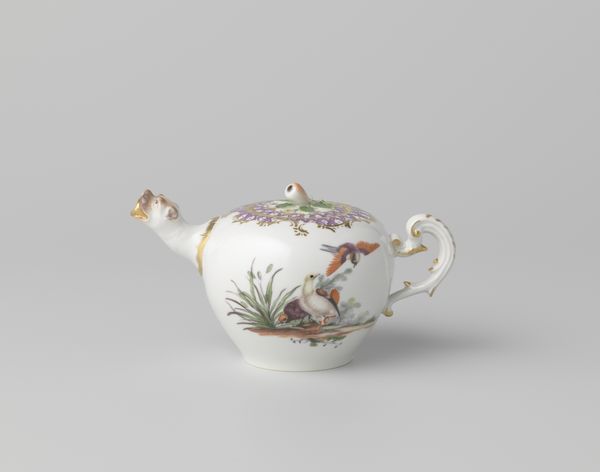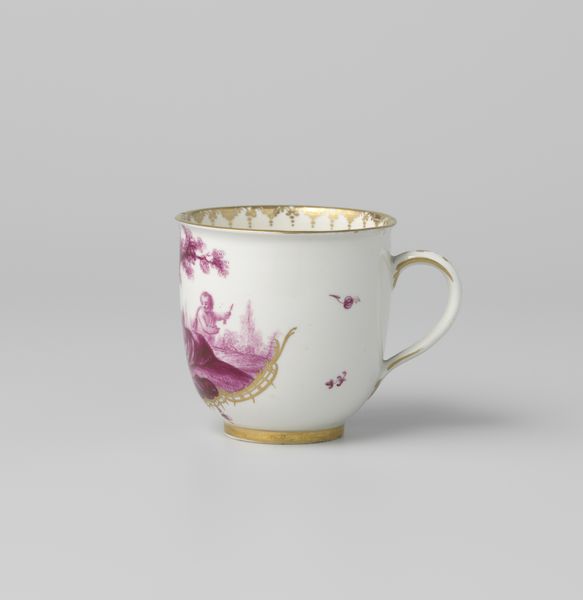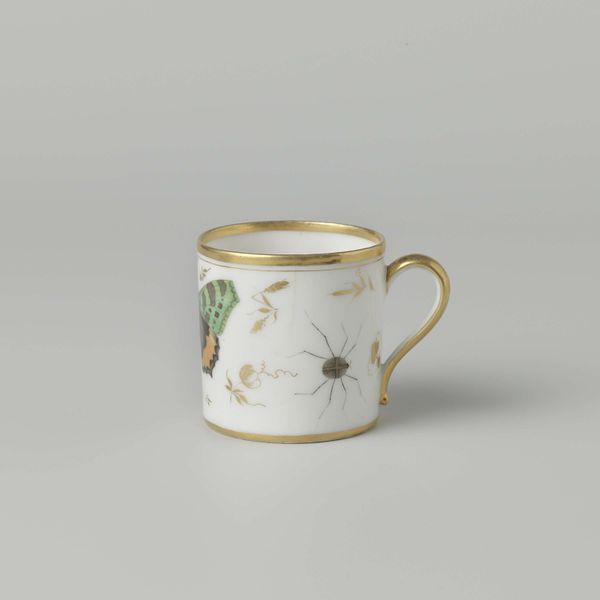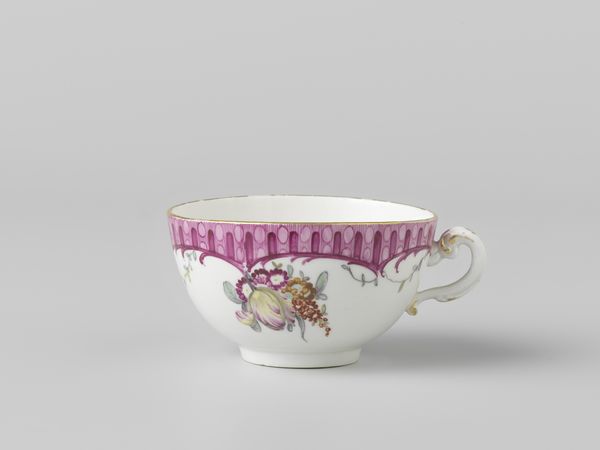
porcelain
landscape
porcelain
decorative-art
rococo
Dimensions: height 4 cm, diameter 6.7 cm, diameter 2.8 cm, width 8.1 cm
Copyright: Rijks Museum: Open Domain
Curator: Welcome. Before us, we have a porcelain cup originating from Ansbach, dating back to around 1765. It is titled "Cup with birds in a landscape" and forms part of the Rijksmuseum collection. Editor: It's a very delicate object, isn't it? There is such careful precision to its form, which balances so harmoniously with its colourful yet restrained decoration. The handle has an almost musical quality to it. Curator: Yes, the cup exemplifies the Rococo style, showcasing a decorative arts aesthetic highly prized during that era. Pieces like these often reveal much about 18th-century social structures. Owning and displaying them was, in many ways, performative. Think about who used such a delicate object, the tea, sugar and porcelain coming together across global colonial networks of exploitation... Editor: The painted scene featuring birds within the landscape invites reflection, certainly, although I’m captivated by the violet and gilt rim; its detailed and intricate pattern, contrasting nicely against the smooth, stark whiteness of the cup, provides an exquisite border. Note too, how the colours within the landscape, earthen reds and pale greens, are picked out and enhanced by the brighter band running near the lip of the cup. Curator: Those naturalistic landscape scenes, as innocent as they may appear, were often used in aristocratic settings as a sort of escapist fantasy for those at the apex of an increasingly unequal society. A sanitised, pastoral counterpoint to the economic realities from which they were often so disconnected. The landscapes are never innocent! Editor: That is a vital aspect, certainly. I think though we also see a clever balance of colour and line to create, despite all that you have pointed out, an undeniably elegant work. It’s that tension perhaps that makes it interesting still today. Curator: Exactly. Understanding the broader socio-economic context enhances our understanding. Editor: It adds layers to its interpretation; informing the technical appreciation that enlivens my response.
Comments
No comments
Be the first to comment and join the conversation on the ultimate creative platform.
